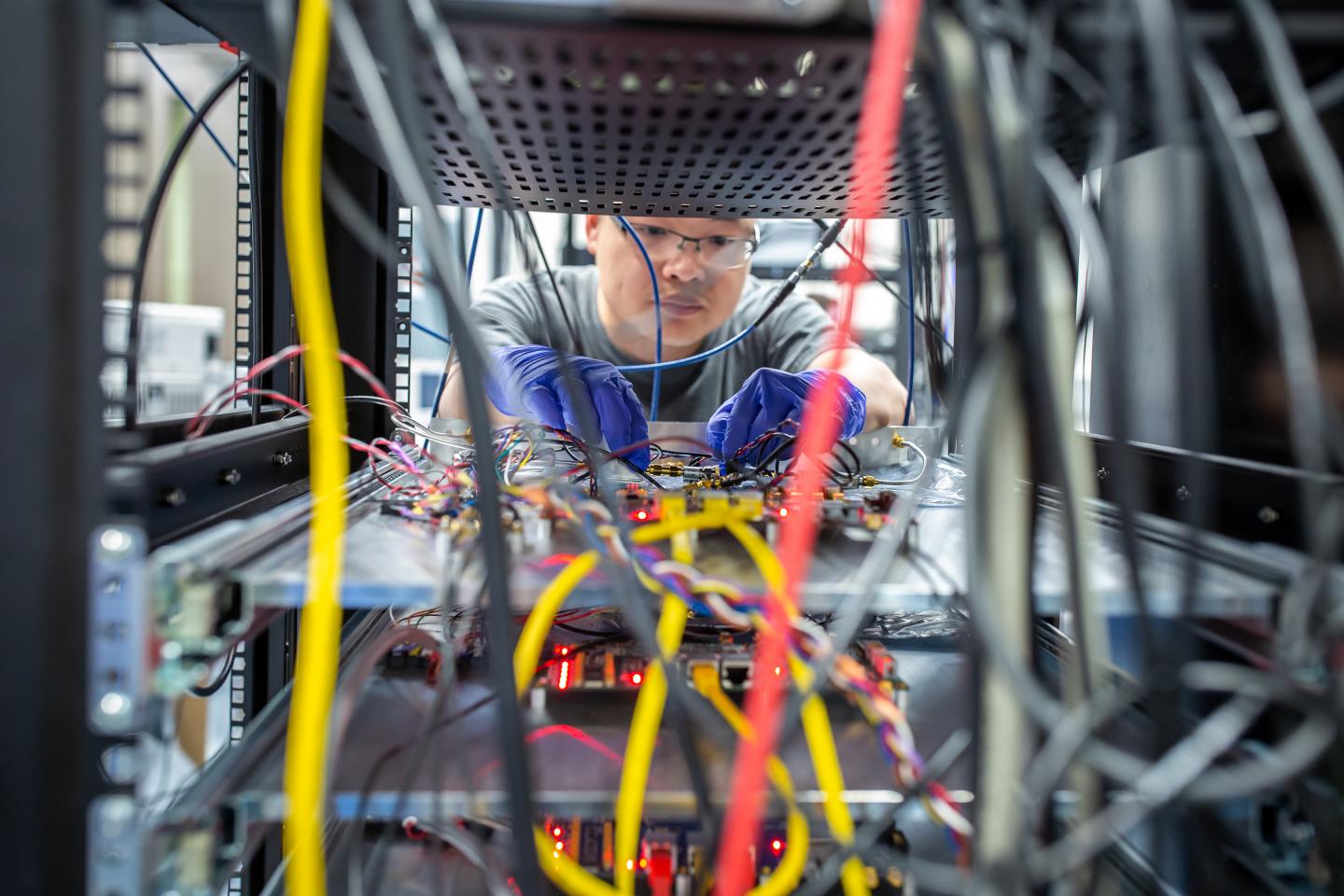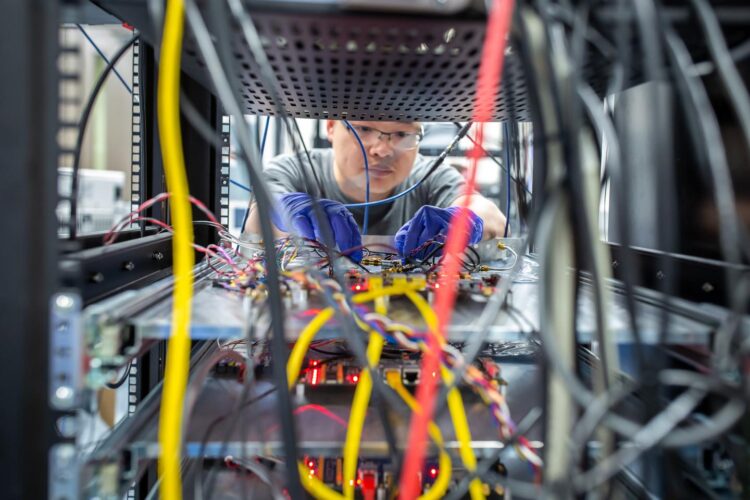
Credit: Nancy Wong, University of Chicago
RESEARCH TRIANGLE PARK, N.C. — New Army-funded research could help lay the groundwork for future quantum communication networks and large-scale quantum computers.
Researchers sent entangled qubit states through a communication cable linking one quantum network node to a second node.
Scientists at the Pritzker School of Molecular Engineering at the University of Chicago, funded and managed by the U.S. Army Combat Capability Development, known as DEVCOM, Army Research Laboratory’s Center for Distributed Quantum Information, also amplified an entangled state via the same cable first by using the cable to entangle two qubits in each of two nodes, then entangling these qubits further with other qubits in the nodes. The peer-reviewed journal published the research in its Feb. 24, 2021, issue.
“The entanglement distribution results the team achieved brought together years of their research related to approaches for transferring quantum states and related to advanced fabrication procedures to realize the experiments,” said Dr. Sara Gamble, program manager at the Army Research Office, an element of the Army’s corporate research laboratory, and co-manager of the CDQI, which funded the work. “This is an exciting achievement and one that paves the way for increasingly complex experiments with additional quantum nodes that we’ll need for the large-scale quantum networks and computers of ultimate interest to the Army.”
Qubits, or quantum bits, are the basic units of quantum information. By exploiting their quantum properties, like superposition, and their ability to be entangled together, scientists and engineers are creating next-generation quantum computers that will be able solve previously unsolvable problems.
The research team uses superconducting qubits, tiny cryogenic circuits that can be manipulated electrically.
“Developing methods that allow us to transfer entangled states will be essential to scaling quantum computing,” said Prof. Andrew Cleland, the John A. MacLean senior professor of Molecular Engineering Innovation and Enterprise at University of Chicago, who led the research.
Entanglement is a correlation that can be created between quantum entities such as qubits. When two qubits are entangled and a measurement is made on one, it will affect the outcome of a measurement made on the other, even if that second qubit is physically far away.
Entanglement is a correlation that can be created between quantum entities such as qubits. When two qubits are entangled and a measurement is made on one, it will affect the outcome of a measurement made on the other, even if that second qubit is physically far away.
To send the entangled states through the communication cable–a one-meter-long superconducting cable–the researchers created an experimental set-up with three superconducting qubits in each of two nodes. They connected one qubit in each node to the cable and then sent quantum states, in the form of microwave photons, through the cable with minimal loss of information. The fragile nature of quantum states makes this process quite challenging.
The researchers developed a system in which the whole transfer process–node to cable to node–takes only a few tens of nanoseconds (a nanosecond is one billionth of a second). That allowed them to send entangled quantum states with very little information loss.
The system also allowed them to amplify the entanglement of qubits. The researchers used one qubit in each node and entangled them together by essentially sending a half-photon through the cable. They then extended this entanglement to the other qubits in each node. When they were finished, all six qubits in two nodes were entangled in a single globally entangled state.
“We want to show that superconducting qubits have a viable role going forward,” Cleland said.
A quantum communication network could potentially take advantage of this advance. The group plans to extend their system to three nodes to build three-way entanglement.
The researchers developed a system in which the whole transfer process–node to cable to node–takes only a few tens of nanoseconds (a nanosecond is one billionth of a second).
“The team was able to identify a primary limiting factor in this current experiment related to loss in some of the components,” said Dr. Fredrik Fatemi, branch chief for quantum sciences, DEVCOM ARL, and co-manager of CDQI. “They have a clear path forward for increasingly complex experiments which will enable us to explore new regimes in distributed entanglement.”
###
Media Contact
Lisa Bistreich-Wolfe
[email protected]
Original Source
https:/
Related Journal Article
http://dx.





